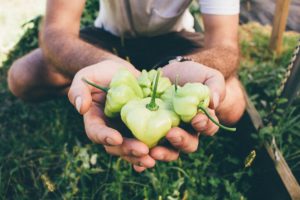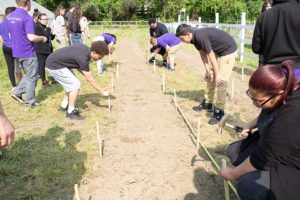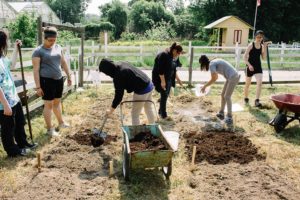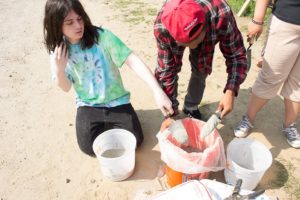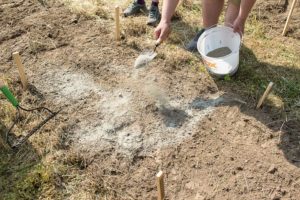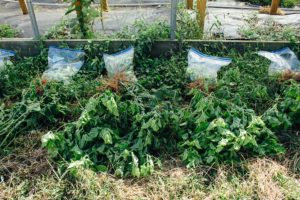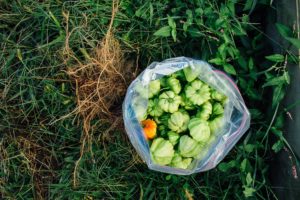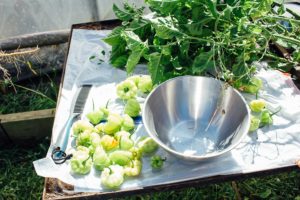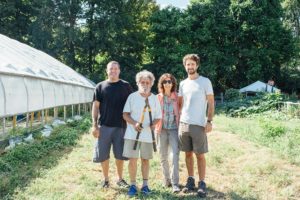Effects of Rock Dust and Compost on Aji Peppers
Mrs. Kira Jewitt's 9–10th grade class
Paulo Freire Social Justice Charter School
Holyoke, Massachusetts
Grades 9-12

May-Aug

Field Trials
Abstract
This project was conducted by eight science classes at Paulo Freire Social Justice Charter School in Holyoke, MA. In partnership with Remineralize the Earth and Rock Dust Local, the students and teachers aimed to test remineralization on garden plots at Nuestras Raices, Holyoke, MA. The experiment tested the utilization of rock dust and rock dust + compost to improve soil fertility and crop yields. The ultimate aim of the project was to test the effectiveness of remineralization on crops critical to the Puerto Rican community; for this reason, cilantro and aji peppers served as the test crops. Ultimately, the rock dust + compost plots yielded higher numbers of pepper shoots and fruits, compared to control plots. This project provided young, future researchers with the opportunity to learn and study sustainable agricultural practices that they can further develop and test.
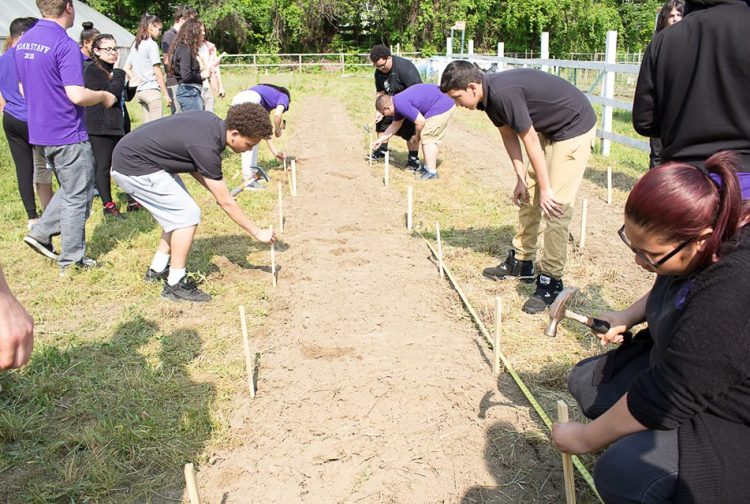
Introduction
The Paulo Freire Social Justice Charter School (PFSJCS) located in Chicopee focuses on academic excellence and social justice awareness. PFSJCS fosters strong intellectual and ethical foundations to prepare students to attend and succeed in college, increase community and global understanding and involvement, and inspire future leaders
Nuestras Raíces is a grassroots urban agriculture organization based in Holyoke, MA. Their mission is to create healthy environments, celebrate “agri-culture,” harness their collective energy, and to advance their vision of a just and sustainable future.
Research Question
Rock dust is an abundant and natural resource that can be effectively used in remineralization. Can rock dust be utilized to improve soil fertility and crop yields?
Nuestras Raices provided compost (hay, organic matter, and manure), while Rock Dust Local provided a local rock dust product called BrixBlend (all-purpose paramagnetic rock dust made from pulverized basalt). A combination of rock dust and compost was used to study the effects of remineralization on garden plots at Nuestras Raices. This trial involved eight science classes (approximately 100 students) at Paulo Freire Social Justice Charter School (PFSJCS) testing cilantro and aji peppers.
Materials and Methods
The students were responsible for designing and staking out the three plots: (1) control, (2) rock dust alone (RDL BrixBlend), and (3) rock dust + compost (RDL BrixBlend and Nuestras Raices compost mixture).
The experiment was carried out at the end of the semester, and the plots were monitored by the farm manager and RTE’s Joanna Campe.
For initial observation and data collection, the students grew cilantro seedlings indoors with grow lights. Cilantro was originally chosen due to its shorter growing season and feasibility with smaller plots. After the seedlings were grown indoors, the students transplanted the seedlings into 24 (8 classes x 3 plots) 3’x4’ plots. In late spring, the initial clearing of the land for the plots was done by the Nuestras Raices farm manager, and subsequently, the design layout construction took place with the students.
When cilantro seedlings were no longer a feasible crop option due to an unanticipated heat wave, aji peppers replaced the cilantro for the data collection. The aji peppers were harvested in early September.
One science teacher and a Nuestras Raices Americorp staff member were involved in the initial experimental set-up. The harvest team consisted of Dr. Tom Goreau, Thomas Sarkisian, Julian Hartmann Russell (PFSJCS gardening teacher), and Joanna Campe of Remineralize the Earth.
The students measured and constructed 24 plots using stakes, strings, and signs for each of the plots. Prior to testing, the soil was turned over with shovels, and soil samples were gathered and sent to Logan Labs for baseline analysis.
After baseline samples were collected, two quarts of rock dust were measured onto each plot except for the control. The rock dust was raked and evenly distributed into a uniform application over the plots.
After harvesting the aji peppers, the peppers, shoots, and root balls were weighed (grams) to assess differences in biomass. The data for mineral tissue analyses was sent to Logan Lab in Ohio. These differences in biomass were used as one measure of soil fertility and for yields. Differences in soil fertility were also assessed by measuring percent changes in viable nutrients – iron, magnesium, potassium, and nitrogen. Given that the soil was already fertile due to sustainable agriculture practices at Nuestras Raices, large differences were not expected; nonetheless, the harvest team expected to see some improvements to soil fertility, compared to the baseline.
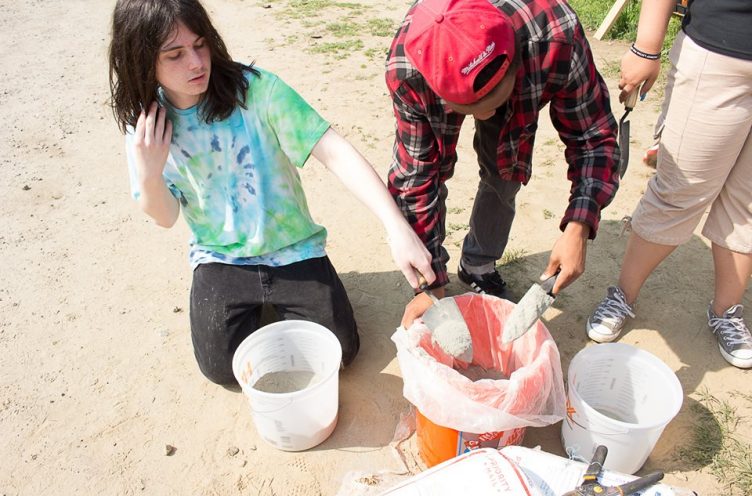
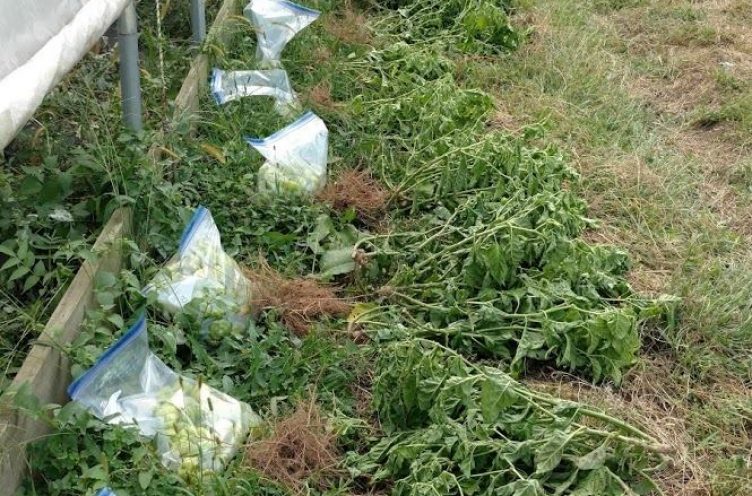
Results
Initial observational results suggested a 30% increase in yields for the plots that used rock dust and compost combined.
Several measures of soil fertility were used: plants per plot, roots per plant, shoots per root, and fruits per shoot. Results indicated that there was a significant (? no stats) difference for shoots per root, where rock dust + compost had more shoots per root compared to rock dust alone and the control plot. In addition, the number of fruits per shoot for rock dust + compost (1,976 fruits) were significantly more than rock dust alone (1,028 fruits) and control (910 fruits).
A similar trend was observed for fruit biomass: Peppers grown in the rock dust + compost plot had larger mean biomass (564.64 g) compared to peppers grown in rock dust alone (280.39 g) and compost (38.75 g).
In measuring the percent change in soil nutrients, the rock dust + compost plots had the highest percent change in iron. Rock dust plots and rock dust + compost plots also had equivalent percent changes in magnesium.
Nuestras Raices provided compost (hay, organic matter, and manure), while Rock Dust Local provided a local rock dust product called BrixBlend (all-purpose paramagnetic rock dust made from pulverized basalt). A combination of rock dust and compost was used to study the effects of remineralization on garden plots at Nuestras Raices. This trial involved eight science classes (approximately 100 students) at Paulo Freire Social Justice Charter School (PFSJCS) testing cilantro and aji peppers.
Implications and Conclusions
The original experiment investigated the effects of rock dust on soil fertility and cilantro crop yields. While the cilantro experiment failed in early trials, students and teachers gained first-hand experience with scientific trial and error; the experimenters learned that cilantro seedlings were too delicate for transplantation, and needed to be sown directly.
Despite this initial setback, students gained experience with experimental design, experimental set-up, and various types of agricultural methodology.
Moreover, students learned about geology, formation of soils, and the importance of sustainable, nutritional gardening and farming. From this project, students can engage with further questions that integrate agriculture, geology, and botany with sustainability and nutrition.
Acknowledgement
This study was supported by the Judith Haskell Brewer Fund of the Community Foundation Serving Richmond and Central Virginia. This work was made possible by Remineralize the Earth and its generous partners: The Paulo Freire Social Justice Charter School (Holyoke, MA), Nuestras Raices (Holyoke, MA), and Rock Dust Local.
Thank you to PFSJCS science teacher Kira Jewett, Nuestras Raices Americorp staff volunteer Olivia Billier for supervising the students. And thanks to farm manager Carlos Nazario for collecting soil samples.
This work would not have been possible without the harvest team: RTE Board Director Dr. Tom Goreau, Thomas Sarkisian, PFSJCS gardening teacher Julian Harman Russell, and RTE Executive Director Joanna Campe.
Lastly, thank you to the students at PFSJCS – great work, future junior scientists!
Photos and Videos
